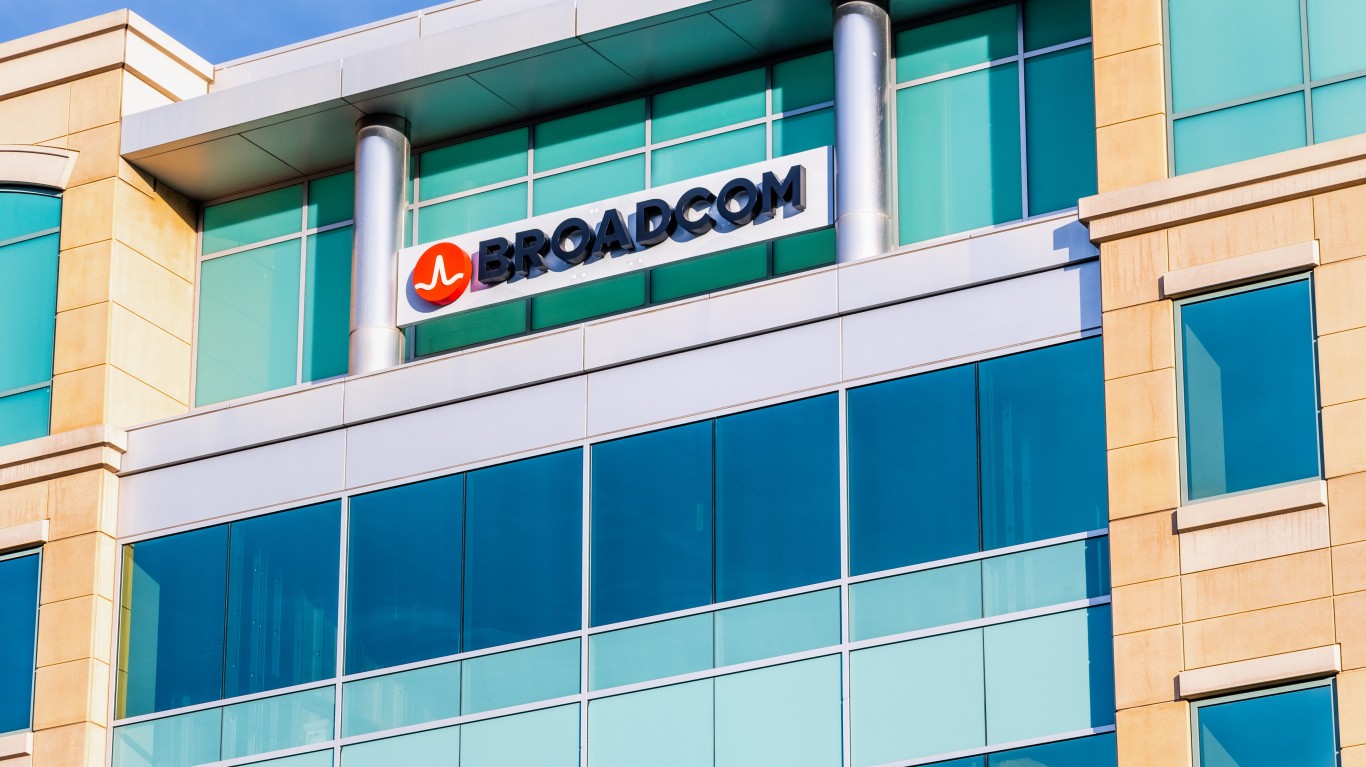Investing
3 Reasons Broadcom Will Issue a Stock Split After NVIDIA

Published:
Last Updated:

Now that NVIDIA (Nasdaq: NVDA) has proven the prognosticators right and declared its stock split, who could be the next to issue a stock split? The next company in line could very well be Broadcom (Nasdaq: AVGO), another semiconductor play that is immersed in the artificial intelligence (AI) frenzy.
Broadcom made headlines this week when Hock Tan, the company’s CEO, topped the Wall Street Journal’s rankings as the highest-paid boss in corporate America, with a whopping $161 million in stock-based compensation. Tan is highly incentivized to receive those earnings but certain performance metrics must be reached first.
Chief among the criteria for the pay package is Broadcom’s stock must hit a designated mark by 2025. Additionally, Tan must stay at the helm for at least five more years, incidentally giving Broadcom investors the type of stability they want in a high-growth tech name. Between Tan’s motivation and the following three reasons, Broadcom just might be the company to issue a stock split after its peer, Nvidia.
Broadcom is a high sticker priced stock that has neared the $1,500 level over the past 52-week period. While it’s off that peak, Broadcom stock has advanced 27% year to date. Bullish sentiment around AI stocks has also lifted the broader iShares Semiconductor ETF. Broadcom stock is poised to continue benefiting from AI-fueled demand in the coming quarters.
Wall Street analysts are also bullish on Broadcom stock, as evidenced by nearly two dozen buy ratings and an average price target of $1571, reflecting 13% upside potential. Given the demand for Broadcom’s AI data center solutions, including its recently launched 400G PCIe Gen 5.0 Ethernet adapters for greater scale, it wouldn’t be shocking to see the stock achieve analysts’ target sooner rather than later.
Broadcom is also on a short list of tech stocks that trade above the $1,000 level, a group that extends to Super Micro (Nasdaq: SMCI), Booking Holdings (Nasdaq: BKNG), MercadoLibre (Nasdaq: MELI) and pre-split Nvidia. Broadcom’s historic stock splits have been 3:2 or 2:1. But perhaps it might explore taking a page out of Nvidia’s book with a 10:1 stock split this time around.
Broadcom stock is prevalent in investor portfolios, including leading asset management firms like Vanguard and BlackRock. Hedge fund traders are also active in the stock, including the likes of Steven Cohen’s Point72, Temasek and Tiger Global Management.
But if Broadcom could split the stock three, five or even 10 ways, it would trade for a much lower price point, thereby appealing to a whole new set of individual investors. While a stock split doesn’t change the value of an investor’s holdings, or Broadcom’s market cap, it bolsters liquidity and achieves a great deal at the behavioral finance level. Investors would likely be more inclined to pile into a stock they could own several shares of rather than only holding a fraction of a share.
With a market cap of $640.9 billion, Broadcom boasts a 1.37% weighting in the S&P 500 alongside companies like Tesla (Nasdaq: TSLA), which has implemented two stock splits in the past four years. Even Warren Buffett’s Berkshire Hathaway (NYSE: BRK-B) is also a member of the stock-splitting club for class-B shares.
Besides, chip stocks are fiercely competitive, and Broadcom is overdue for a split. Since its founding in the 1990s, the company has split its shares on three separate occasions. But it has yet to do so since its combination with Avago in 2015. Given the tailwind of AI, including a recently renewed partnership with search giant Google Cloud for its AI capabilities, Broadcom has every reason to be the next company to split its stock after Nvidia.
Thank you for reading! Have some feedback for us?
Contact the 24/7 Wall St. editorial team.